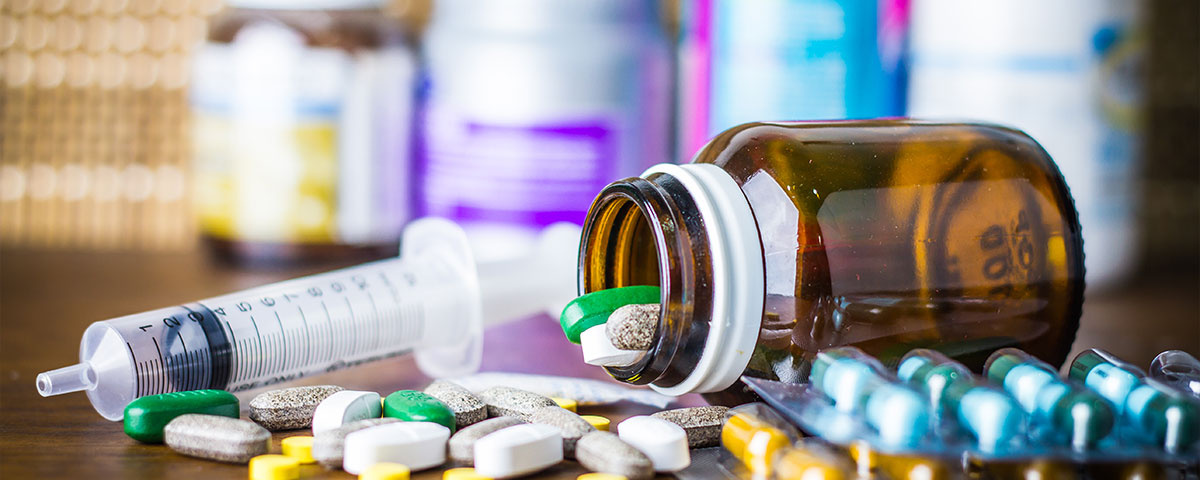Even if you don’t have any personal experience with heroin abuse, you may have an idea of how debilitating addiction to it can be to a person and their loved ones. While you may know about the dangers of heroin, did you know that another version of it exists? Our drug rehab in Pennsylvania is sharing what you should know about black tar heroin.
What Is Black Tar Heroin and What Does it Look Like?
Heroin is an illegal opioid drug that’s highly potent and addictive. It’s processed from another drug called morphine, which is a natural substance extracted from poppy seeds. It’s made by extracting the milky, sap-like opium resin from poppy seeds. It’s then continuously refined from morphine into various versions of heroin. How black tar heroin is made depends on who and where it’s made. Some labs exist in other countries dedicated to producing illicit drugs like heroin that may have specialty equipment to make this process as efficient as possible.
Black tar heroin is a different form of heroin that looks like a black, sticky substance that resembles tar, hence the name. Black tar heroin works by attaching itself to opioid receptors in the central nervous system. This activates the release of a chemical called dopamine, which acts as a messenger between the brain and body. Dopamine is naturally released by the brain when people do things they enjoy. The brain will also recycle any “leftover” dopamine. Black tar heroin disrupts this process, causing an influx of dopamine that produces side effects like euphoria and pleasure.
Where Does Black Tar Heroin Come From?
Most black tar heroin comes from places like Afghanistan and Mexico. Although most of the U.S. heroin supplies came from Mexico, Afghanistan’s white powder heroin took over the nation at one point. In response, Mexican drug cartels began producing and distributing a higher-quality form of heroin (black tar). Black tar heroin is also cheaper than white powder heroin, but it’s just as harmful. Its lower purity means it’s cut with more harmful additives than other types of heroin. This poses a new problem as more heroin users turn to this cheaper, but just as dangerous, alternative to get high.
What Are the Ingredients in Black Tar Heroin?
The ingredients in black tar heroin are often unknown. Street dealers tend to include various additives and cutting agents in illicit drugs like heroin to lower the cost of production while gaining profit. These additives increase the potential for health complications, overdose, and death.
Black tar heroin ingredients include:
- Fentanyl
- Diacetylmorphine
- Psychoactive drugs
- Calcium oxide
- Ammonia
- Chloroform
- Hydrochloric acid
- Acetic anhydride
- Xylocaine
- Talc
- Flour
- Powdered milk
- Sugar
- Black shoe polish
- Dirt
- Quinine
What Are the Side Effects of Black Tar Heroin?
The morphine (opioid) in heroin is the ingredient that makes it so addictive. People who abuse any form of heroin report feeling a rush of euphoria and pleasure. While these side effects may seem pleasant, they come with a long list of other harmful symptoms.
Some common black tar heroin effects include:
- Feelings of euphoria and pleasure
- Heaviness in the arms and legs
- Nausea and vomiting
- Severe itching and scratching
- “Brain fog” or clouded mind
- Going “on the nod” or jumping between consciousness and unconsciousness
- Insomnia
- Cardiovascular disease
- Liver and kidney disease
- Lung problems, like pneumonia
- Mental illness including depression and antisocial personality disorder
- Sexual dysfunction (in men)
- Irregular menstrual cycles and fertility issues (in women)
Black tar heroin overdose is likely to occur with continued use. People who overdose on black tar heroin may experience symptoms like unconsciousness, inability to speak even if they’re awake, unresponsiveness, blue or grayish skin, choking sounds (also called the “death rattle”), and more. At Clearbrook Pennsylvania, we offer heroin detox that helps people addicted to heroin slowly wean off of it and safely get through the withdrawal phase of recovery. It’s the safest first step in addiction treatment.
How Long Does Black Tar Heroin Stay In Your System?
Heroin generally has a half-life of 30 minutes, meaning that half the dose taken will be broken down by the body in that length of time. How long black tar heroin lasts in a person’s system depends on their:
- Age
- Weight
- Genetics
- Body fat
- Dose
- Purity of the drug
- Metabolism
- State of their liver and kidneys
- Hydration
Long-time heroin users also tend to use more heroin than first-time users because they’ve developed a tolerance to it. While one dose may immediately affect one person, someone else may need a higher dose to experience the same side effects. When it comes to drug testing for black tar heroin, it can be detected for different lengths of time depending on what is being tested.
The length of time black tar heroin is detectable in different drug tests:
- Only detectable for 5-6 hours in bodily fluids
- Detectable in urine for 2 days
- Detectable in hair for up to 3 months
Blood and saliva tests aren’t usually used when testing for heroin because of its short half-life. Because black tar heroin symptoms diminish so quickly, users tend to ingest several doses back-to-back to maintain their high.
We’re sharing what you should know about black tar heroin because this drug is one of the most life-threatening ones in the drug market. If you or someone you know is addicted to heroin or any other substance, call us now at 570-536- 9621 for more information about our addiction treatment programs in Pennsylvania.







